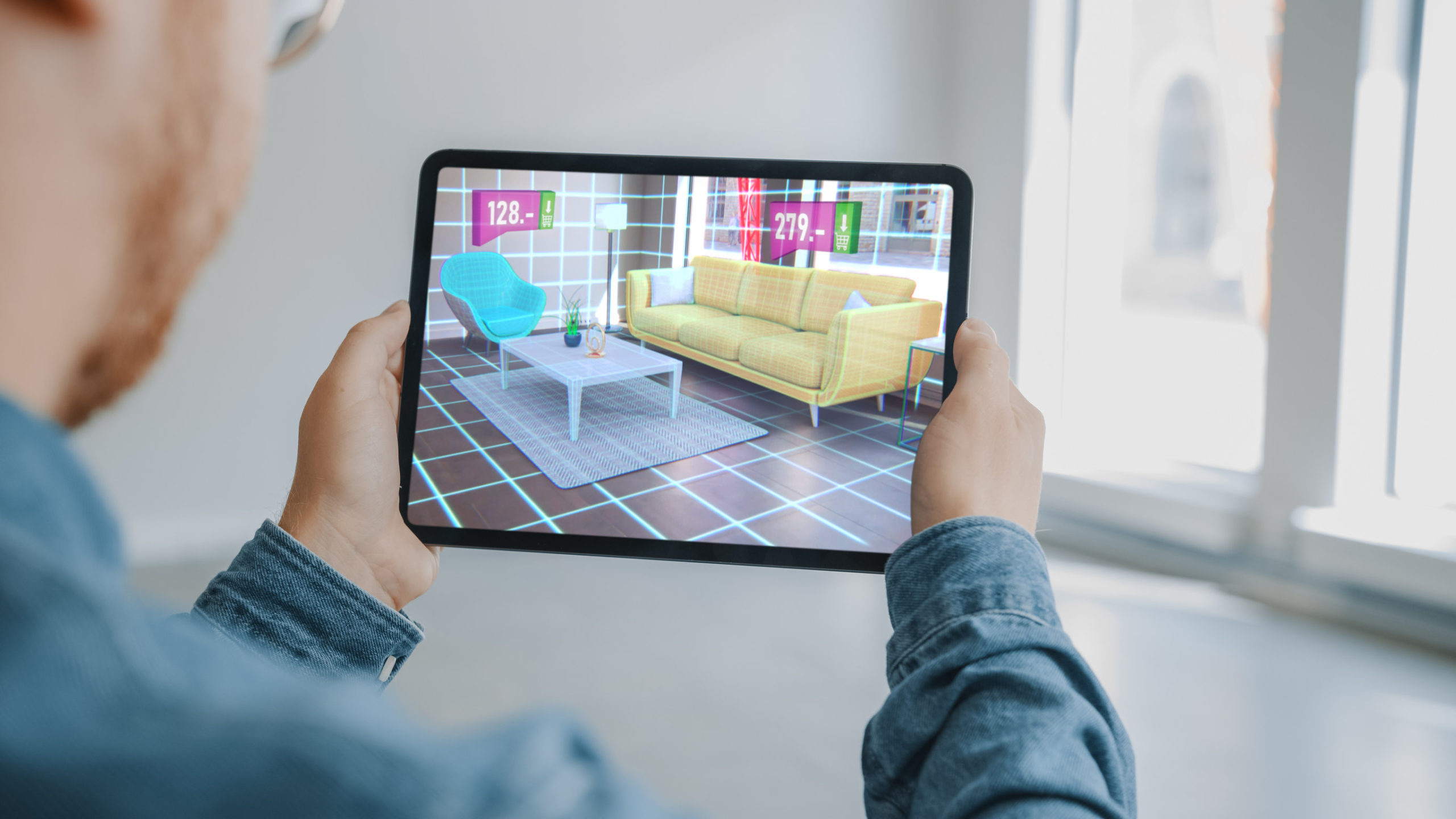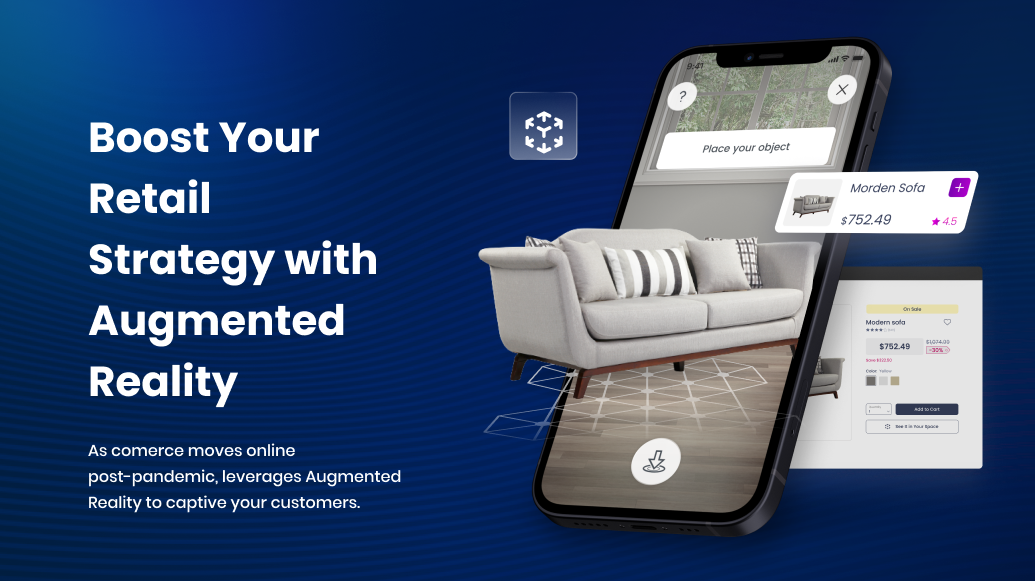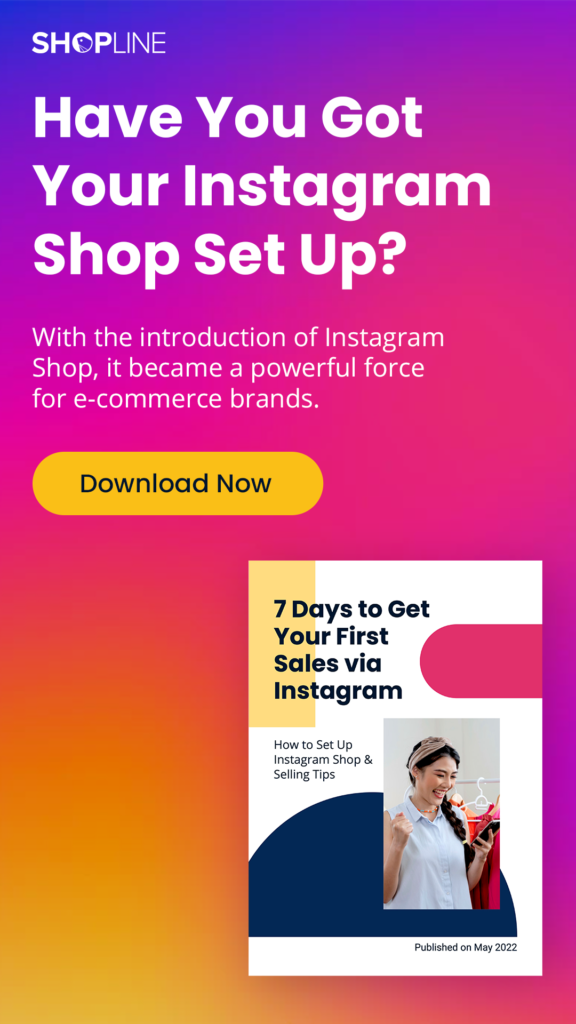If Pokemon Go has taught us anything, it’s that Augmented Reality (AR) is now very much a thing of the present. To this day, millions around the world use their phones to discover a hidden world of cute, collectible creatures that are otherwise hidden in plain sight. This app alone has made over $5 billion dollars worldwide, and hinges almost entirely on its revolutionary use of AR technology.
As a retail brand, your key takeaways from Pokemon Go’s success should be that 1) AR is now widely adopted by the mainstream, and 2) through perceived ownership, AR is engaging audiences online like never before. Google found that 6 in 10 people “want to be able to visualize where and how a product could fit into their lives,” and with AR, this visualization will possible before consumers commit to a purchase.
AR tends to simplify purchasing processes and shorten sales cycles, which is why many brands, both large and small, are leveraging AR solutions, which have become more accessible over the years, to better captivate their customers online. At SHOPLINE, we’ve seen a large shift in commerce going digital post-pandemic, and we project that AR will be a key differentiating factor for brands looking to get their products to stand out.
1. Sampling Experience Through Augmented Reality

Using AR, customers have view how a piece of furniture they’re looking to buy will fit into their space before making a purchase
Perceived ownership is a powerful thing to leverage as a retail brand. Brick-and-mortar stores have had a much easier time of this in the past, with customers able to physically interact with your product, which has strongly influenced purchasing decisions.
Online however, perceived ownership is much harder to leverage. Pictures and videos, while more important than ever, still pale in comparison to customers seeing themselves with your product in hand, and picturing themselves owning it. With AR, you will be able to closely imitate the sampling experience offered by physical stores. Studies have shown that AR evokes similar emotional attachments in customers when it comes to product sampling.
Furniture brands such as Castlery have enabled AR on their online stores. Customers are able to see how new furniture pieces will look in their homes, allowing them to make better purchase decisions and improving the customer experience.
2. Interactive AR Educational Material

Augmented reality can be useful for educational purposes, like this museum using AR to depict how the dinosaur would look when it was alive.
Behind the scenes, many companies are now using AR to train their employees, giving them an experience of hands-on training without having to make costly physical mistakes. It provides employees and students with an immersive and multisensory experience that is often more engaging and effective than traditional training plans.
Retail brands in particular have started using AR in training scenarios. Employees are able to use AR to learn more about their products, get a tour of the sales floor, and even virtually meet the team. From sales training to learning about safety procedures, preparing for a retail environment can be more stress-free as a trainee becomes comfortable with transactions and customer interaction.
3. Augmenting Marketing Efforts with AR
Creating dynamic experiences can also strongly benefit your marketing efforts.
AR solutions company Nextech AR allows you to transform 2D images into 3D/AR models affordably and at scale, which can be turned into 3D responsive ads with AR models of your products that can boost click-throughs and impressions. These models can be uniquely animated, allowing you to walk your customers through the usability of your product, bringing your product to life and demonstrating its function more effectively than videos or photos can. Click HERE for an Ad example
In fact, products advertised with AR/VR have shown to have 94% higher conversion rates than products without such content, says research from Google.
Netflix also partnered with Snapchat to create AR filters to market the then-upcoming season of their hit show Stranger Things. Using the Snapchat app on their phones, a special AR filter would allow viewers to immerse themselves in the Stranger Things world. They could see themselves walking through houses in the show, or even see monsters pop-up at them. The filter went viral on Snapchat, with many users even saving and sharing their AR experiences on their other social media channels.
Takeaway:
There are few marketing initiatives that can replicate the immersive experience that AR provides. These creative use cases of AR will prove more helpful than ever as eCommerce continues to rise in adoption worldwide post-pandemic.
As AR solutions become more accessible to brands of all sizes, learning how you can properly leverage the technology to augment your digital commerce business with SHOPLINE will be key in setting your brand apart from your competitors.
At SHOPLINE, we’re looking to bring our merchants exciting partnerships that can augment your business capabilities in the coming year. Keep up with SHOPLINE on Facebook & Instagram for exciting announcements and updates on our latest features!
Read More:





